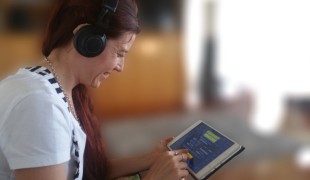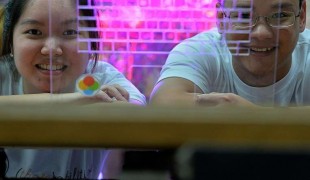- 10947
- 634
- 12
- 17
- 0
- Help Ukraine
About the solution
Vincent decided to make a modified Wii Remote controller working as a mouse computer when he saw one of his aunts using the computer mouse with her hands. Due to an illness her hands shake a lot.
The device is controlled through tongue motions. It’s like a helmet that you put in your head, then you insert a bubble tap keychain in your mouth. That will work like a computer mouse. From here you are able to surf the internet and, with some practice, you might as well be able to make some drawing on the windows paint app for example!
Adapted from: http://www.instructables.com/id/Mouse-for-people-with-hand-disabilities/
This solution shall not include mention to the use of drugs, chemicals or biologicals (including food); invasive devices; offensive, commercial or inherently dangerous content. This solution was not medically validated. Proceed with caution! If you have any doubts, please consult with a health professional.
DISCLAIMER: This story was written by someone who is not the author of the solution, therefore please be advised that, although it was written with the utmost respect for the innovation and the innovator, there can be some incorrect statements. If you find any errors please contact the patient Innovation team via info@patient-innovation.com
-
-
463
-
0
-
5226

Man with cochlear implant develops app to help others
COMMUNICATION: Communicating, whether by speaking, listening, or other means
Video gaming
Congenital Deafness
Hearing Disorders
5 Senses support devices: (glasses, hearing aids, headphones...)
App (Including when connected with wearable)
Assistive Daily Life Device (to help ADL)
Regaining sensory function
Promoting self-management
Neurology
Otorhinolaryngology
Australia
-
-
-
642
-
0
-
12076

Lowcost keyguard for disabled people
Video gaming
Writing (letters, songs, peoms)
Parkinson's Disease
Stroke
Muscular Dystrophy
Assistive Technology access
Strategy/Tip
Assistive Daily Life Device (to help ADL)
Chest pain or discomfort
Gait abnormalities (e.g., walking difficulties, unsteady gait)
Tremors
Muscle cramps or spasms
Difficulty coordinating movements
Stiffness or rigidity (difficulty moving)
Muscle weakness
Fatigue
Dizziness or lightheadedness
Numbness or weakness in the legs
Fainting or loss of consciousness
Irregular heartbeat (arrhythmia)
Cold hands or feet
Rapid heartbeat (tachycardia)
Transpiration (Sweating)
Shortness of breath
Chest tightness/pressure
Restoring mobility
Promoting self-management
Promoting inclusivity and social integration
General and Family Medicine
Neurology
Singapore
-
-
-
308
-
0
-
4267

Inventor creates hoist lift for disabled family member
-
 en
en